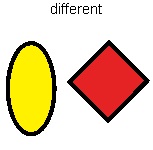Choosing vocabulary for an individual’s communication display can be challenging. There are so many words to choose from – which ones do you add? What do you do if the word that you want isn’t on your display? A student’s communication display needs to be personal and as unique as the individual who uses it. Here are some things to think about when developing a display.
I, (name)
|
look / see
|
want
|
again
|
different
|
you / your
|
do / does / did
|
this
|
more
|
good
|
it
|
help
|
that
|
all gone
|
bad
|
not / don’t
|
stop
|
what
|
ready
|
all done/finished
|
Core Vocabulary
Caregivers, educators and therapists
frequently spend lots of time creating topic-specific communication boards for
students, to encourage active participation. The cooking board is brought out
when we bake (“stir”, “taste”, “yummy!”), the music board presented for singing
(“louder”, “again”, “cymbals”) and the reading board made available at library
(“book”, “check-out”, “change”). Use of communication boards that change with
each activity limits opportunities for students to learn and locate words.
While these boards meet a specific need at a specific time, they may not allow
for communication outside of those activities.
Individuals also
need a personal AAC system that includes a core vocabulary. The
idea behind core vocabulary is to focus on a small number of common, high
frequency, re-usable words that are organized so that the student
can access them as easily as possible. These words can be used for many
reasons: to greet, request, reject, direct, etc. The students need to be taught
the location and meaning of the words, and how to use them.
Of course there will be times when extended
vocabulary (often referred to as “fringe vocabulary”) will be
needed. This can be included with the main display, for example using flip
sheets. “Flip 'n Talk”
is one convenient way to display core and fringe vocabulary.
The same principles should be considered when using vocabulary for
adapted writing activities (e.g. on-screen keyboards). If you would like further information around
core vocabulary for a child who is currently on the TVCC-ACS caseload, please
do not hesitate to contact your ACS clinician(s).
No-Tech Ideas
- When adding symbol labels within the classroom or home, think about using words that encourage kids not just to label items (“door”, “coat”, “arts ‘n crafts”), but also to talk about them (“Go out”, “Put it up”, “I make pictures”).
- Make a large wall-mounted copy of a person’s low-tech board so that others can become familiar with the word locations (helpful when modeling use of vocab.).

 Light Tech Ideas
Light Tech Ideas
Add a message that allows an individual to
request their low-tech communication book / display. “I need my communication
binder. Please place it on my tray.”
High Tech Ideas
Most higher-tech Speech Generating Devices
with customizable vocabularies are shipped with a vocabulary index that
lists the words and their locations on the device. This helps to avoid
programming a word into a second location, which can be confusing for the
person using the device and the facilitator. Put the index in a convenient
location for easy reference. Check the manufacturer’s website to see what’s
available.

Libraries for All
Did you know that a variety of
communication boards are available at all London Libraries? Request the use of
a board at any library help desk. More info at www.tvcc.on.ca.
On-line Resources: Check out these websites for great ideas…
Narrative
Development through Story Re-Telling: Story telling is a great activity to practice using core vocabulary.
Aided Language Stimulation and the
Descriptive Teaching Model describes strategies for teaching individuals to use
AAC.


